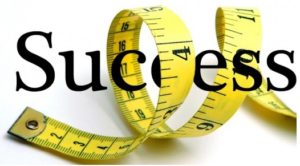Entrepreneurial thinking and doing are the most important capabilities companies need from their employees. As the competitive pace increases, it becomes more and more critical. ~Reid Hoffman
 Here’s just one example of competitive pace. Who would have thought 20 years ago, or even 10 years ago, that we could order something online and expect it to arrive the same day? That competitive pace necessitates entrepreneurial thinking, throughout organizations, not just at the top.
Here’s just one example of competitive pace. Who would have thought 20 years ago, or even 10 years ago, that we could order something online and expect it to arrive the same day? That competitive pace necessitates entrepreneurial thinking, throughout organizations, not just at the top.
Reid Hoffman wrote, “Entrepreneurial employees possess what eBay CEO John Donahoe calls the founder mind-set. As he put it to us, ‘People with the founder mind-set drive change, motivate people, and just get stuff done.’”
Gallup has studied this phenomenon in more detail and published the book Entrepreneurial StrengthsFinder to help all of us better understand exactly what we are looking for and why it’s hard to find it. Gallup reported:
The single most important factor for America’s economic survival remains as mysterious as life on Mars. But maybe that’s because it’s so unusual. Preliminary Gallup research discovered that high entrepreneurial talent is much rarer than high IQ: Only about five in 1,000 people have the aptitude for starting and growing a big business. In comparison, 20 in 1,000 have IQs high enough to be accepted into Mensa.
The 10 talents of successful entrepreneurs are:
Business Focus: You make decisions based on observed or anticipated effect on profit.
Confidence: You accurately know yourself and understand others.
Creative Thinker: You exhibit creativity in taking an existing idea or product and turning it into something better.
Delegator: You recognize that you cannot do everything and are willing to contemplate a shift in style and control.
Determination: You persevere through difficult, even seemingly insurmountable, obstacles.
Independent: You are prepared to do whatever needs to be done to build a successful venture.
Knowledge Seeker: You constantly search for information that is relevant to growing your business.
Promoter: You are the best spokesperson for the business.
Relationship-Builder: You have high social awareness and an ability to build relationships that are beneficial for the firm’s survival and growth.
Risk-Taker: You instinctively know how to manage high-risk situations.
We may not be lucky enough to be one of the five out of a 1,000 to possess all 10 talents. Gallup says to increase your likelihood of success, identify strategies to manage areas of weakness, or acquire skills and knowledge to deal with your lesser talents. Or best of all, form partnerships with people who have a different set of entrepreneurial talents.
In the old economy, efficiency was the cardinal virtue. In the new economy of fierce competition and rapid technological change with markets constantly shifting, entrepreneurial thinking is the new gold standard.


